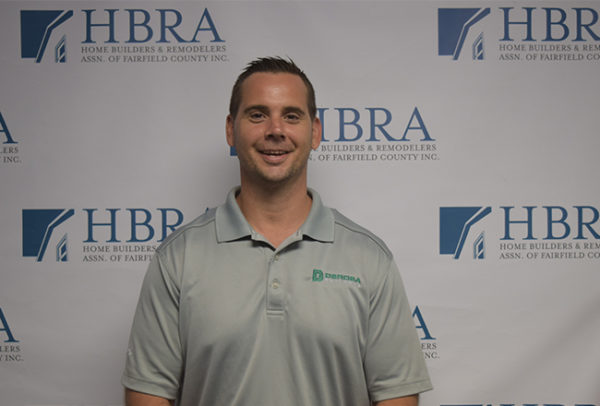New HBRA of Fairfield County president is confident about local builder market
When Anthony DeRosa began his Greenwich-based DeRosa Builders in 2011, he believed that his business would benefit from more extensive connections within the local building industry.

“When I started DeRosa, I felt it was important to go out there and meet people and network,” he recalled. To achieve this goal, he joined the Home Builders & Remodelers Association (HBRA) of Fairfield County, the trade group representing the regional building scene. “Quickly through that it was apparent that the more involved I got, the more benefits I got out of it.”
DeRosa”™s involvement took him all the way to the top of the chapter. On June 6, he was elevated to the role of president of the HBRA of Fairfield County, a one-year term. He acknowledged that he is using this role to pay forward what he gained from his membership.
“I want to make sure that our builders are informed,” he continued. “There are new regulations and code changes, so we need to make sure that we”™re getting the information out to the builders.”
DeRosa said that the current regional market has been good for builders.
“Fairfield County, as a whole, is doing well,” he said. “Lower Fairfield County is doing really well. I”™m not sure what it is ”” I”™ve been around long enough to see a few dips ”” but the market has been very good. They”™re not building the biggest houses anymore, but people don”™t want that. They want something smaller and livable and cozy.”
Despite its name, the HBRA of Fairfield County includes members from Westchester. DeRosa added that while the home-builder market in Westchester had been vibrant, the tax climate could put a damper on activity. “I hear from my clients they want to get away from Westchester taxes,” he said.
On the remodeling side, DeRosa noted an uptick in local activity based on the distinctive nature of this pricey market. “When you have a piece of property on half an acre for a few million bucks and then build a house, economically it”™s not working,” he said. “But if you can buy a 1970s home on two acres for the same price, why not put a million into that and fix it up?”
But that”™s not to say that there are no challenges in his industry. DeRosa noted a new builder confidence survey from the National Association of Home Builders, the HBRA”™s parent organization, which found diminished enthusiasm in an industrywide confidence poll due to increasing lumber costs and fears of a tariff-induced trade war. DeRosa said that while the situation is serious, there is a bright spot on the horizon.
“The good news is there are a lot of other products,” he said. “I can see a time in 10 years from now when we”™re not building with wood. There are so many alternatives. We are barely using wood in exterior trims. Fifty percent of our siding is not wood anymore. The lumber, the floor and plywood that we use is engineered. If costs keep rising, the only alternative is to go to new products or engineered products, which are better for sustainability and maintenance. Those price points used to be high, but now they”™re better.”
One area of construction where DeRosa was not seeing a wave of local interest is green building.
“I think it comes in spurts,” he said. “There was a big rush 10 years ago, then it kind of died off. I think the homes being built today are very green without the requests. No one wants a $1,000 heating bill, so the houses we build today are more efficient than what we were building three or five years ago.”
DeRosa added that while many potential homeowners embrace the green concept, the price tag that often comes with it is another matter.
“We get a lot of requests of people asking for solar or geothermal, but not a lot of follow through when they know those true costs,” he said.